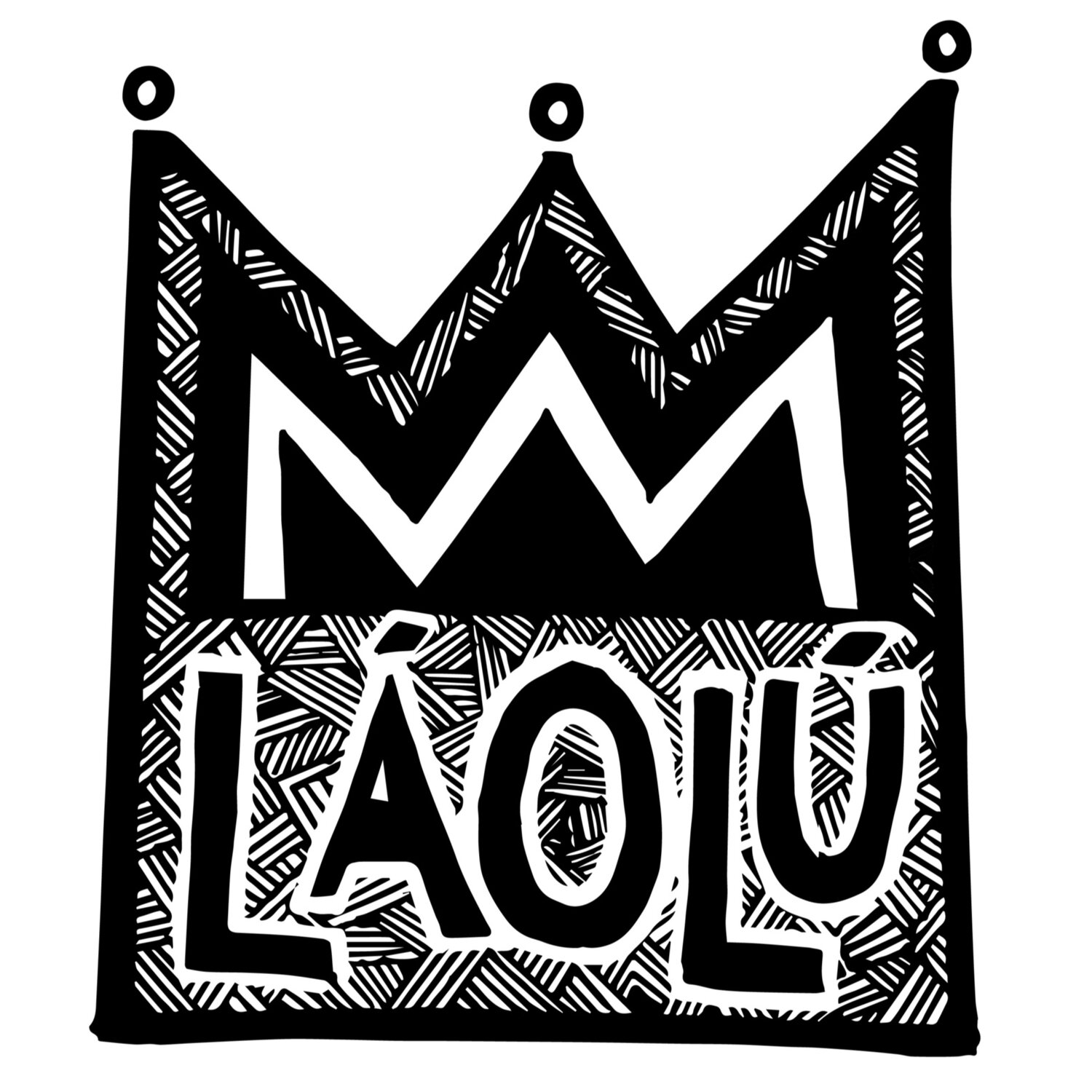Title: I Can’t Breathe
Medium: Acrylic & Charcoal
I Can’t Breathe, provides stark commentary on the brutal intersectionality, the ongoing genocide of African Americans and the decline of American democracy fueled by the rise white nationalism. The piece is also centered around his personal observation as a Black man in America, an identity stripping and oftentimes dehumanizing experience.
With this piece, Láolú unabashedly touches on the failed promise of freedom, liberalism, and racial equity in America in 2020. By linking the killing and continued enslavement of Blacks in America to monetary gains (I.e. the prison industrial complex) paired with ideology that killed millions of Jews during the Holocaust, he makes the connection that many [journalists] won’t. He takes the time to highlight the amplifying role that Twitter played for Donald Trump, while also giving a voice to the BLack Lives Matter movement. Protestors, who are mostly portrayed as eyes, masks and faces represent the thousands globally -past and present- who continue to fight the injustices that plague the Black community in America.
I Can’t Breathe is a complex and unnerving piece that leaves little doubt about the artist’s intentions and feelings surrounding being Black in America.
---
In Spring 2020, George Floyd was murdered by police officers on the streets of Minneapolis, Minnesota. His death, like thousands of other Black men and women killed by law enforcement, triggered a visceral reaction and contemplative moment for Láolú. As a transplant from Nigeria to America, 8 years ago, the term ‘Blackness’ and the life that comes with it is constantly evolving. He not only saw himself in George Floyd, but also in Eric Gardner, strangled by police officers in 2014 in Staten Island, New York. Mr. Garner’s last words were 'I can’t breathe’ which became a battle cry heard over and over at every ‘Black Lives Matter’ protest since.
The shooting range targets strategically placed on Mr. Floyd’s hoodie, is a deliberate statement on how Black bodies are used as target practice by police officers, nationwide. When Láolú first came to live in the U.S., he spent time learning about the Jim Crow era and how it never fully ended, instead racism and the enslavement of black bodies continued via institutions and state sanctioned killings.
The hoodie Mr. Floyd wears pays homage to the unlawful murder of teenager Trayvon Martin in Miami Gardens, FL in 2012. After Martin’s murder, protests led by African Americans broke out across America. Protesters wore hoodies, and chanted ‘hands up don’t shoot,’ an action (verbalized) taught to young African American children for self-defense before they’re even considered young adults. The phrase is depicted in the three black figures with arms raised at the bottom of ‘I can’t breathe’; the figures are ageless and gender less, denoting how all black bodies are viewed and treated in America.
Láolú also chooses to focus on the ties between President Trump and the Police Union, by intentionally placing former President Trump’s upper body rising from underneath the NYPD vehicle. During the 2020 re-election campaign for Mr. Trump, the Fraternal Order of Police Union were staunch suppporters of the President, and welcomed his directive to embody the secret police of Nazi Germany. Láolú beckons the audience to draw the lines between fascism, neo-nazism and the current ideology driving the political systems in America where the head of the NYC Police Union openly affirms violent conspiracy theories like Q-anon. Without question, the location of the symbol on Trump’s shoulder represents the American wave of fascism and the desire to reduce the black population in the US via Congress (the US Capitol is depicted with a money sign, highlighting the influence of special interest groups), the police departments and the prison industrial complex (illustrated by the black figure behind bars).
With this piece, Láolú unabashedly touches on the failed promise of freedom, liberalism, and racial equity in America in 2020. By linking the killing and continued enslavement of Blacks in America to monetary gains (I.e. the prison industrial complex) paired with ideology that killed millions of Jews during the Holocaust, he makes the connection that many [journalists] won’t. He takes the time to highlight the amplifying role that Twitter played for Donald Trump, while also giving a voice to the BLack Lives Matter movement. Protestors, who are mostly portrayed as eyes, masks and faces represent the thousands globally -past and present- who continue to fight the injustices that plague the Black community in America.
I Can’t Breathe is a complex and unnerving piece that leaves little doubt about the artist’s intentions and feelings surrounding being Black in America.
——-

